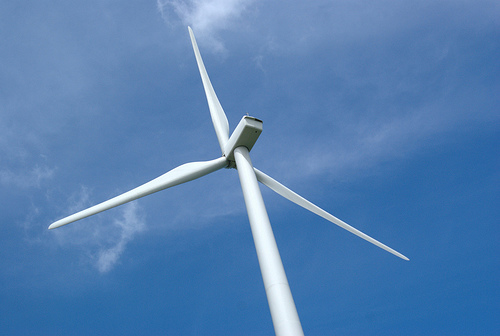“If only developing countries would take action to reduce their global warming pollution.” That is the refrain that was heard in capitals around the world for years. This was driven partly by a concern over competitiveness in some places (e.g., the U.S. and E.U.). And it was also driven by the reality that global emissions (both developed and developing country) need to decline if we are going to solve this challenge. And while developed countries need to take the lead in making deep emissions cuts (as I discussed in part 2), we need to find a way for developing countries to pull millions/billions of people out of poverty while reducing global warming pollution.
“We can’t accept limits on our global warming pollution.” This is a refrain we used to hear from major developing countries for years. Almost anytime they were asked by a reporter (or anyone else for that matter) something like that came out. Usually this was read as: “we won’t do anything to address our global warming pollution.” Which wasn’t exactly true in many countries, but perception is often as important as facts.
Well thankfully both refrains have much better answers now than a couple of years ago (and even a couple of weeks ago).
So the next key element of the international agreement that I’ll discuss is: the willingness of developing countries to undertake significant emissions reductions on their own that tangibly reduce the growth of their emissions in the near-term (e.g., to 2020) and lay the foundation for even deeper cuts in the medium-term. This action is closely related to the “incentives for deeper emissions reductions” (my “key element” 4, which I’ll cover in part 5) and the mechanisms to ensure that countries “open up their books and defend them” (my “key element” 6, which I’ll discuss in part 6).
All the major emerging economies have outlined specific efforts that they’ll undertake to curb their global warming pollution. These include:
- China has just announced that they’ll cut their greenhouse gas emissions intensity per unit of GDP by 40-45 percent below 2005 levels by 2020 (as my colleague Barbara Finamore discussed here). And they previously announced that they would have non-fossil fuels account for 15 percent of their primary energy consumption by 2020 and increase forest cover by 40 million hectares by 2020 (as I discussed here).
- Brazil has pledged to cut their deforestation rate by 80 percent from historic rates by 2020 (as I discussed here). They have been making pretty good progress on addressing their deforestation rates over the past couple of years (as you can see here). Brazil has also just announced that it will reduce emissions by 36-39 percent in 2020 below the projected level (as released here by the Brazilian government) — a level estimated to cut their emissions to their levels in 1994.
- India has just announced that they are “voluntarily ready to reduce emission intensity by 20-25 percent [below 2005 levels] within 2020” (as reported here). This target is based upon a new estimate of the impact of a number of measures which are part of a comprehensive National Action Plan on Climate Change, where they outlined commitments to national mitigation actions, including plans to generate 20GW of solar capacity by 2020 and cut energy consumption by 5 percent by 2015 (as you can see in this NRDC fact sheet).
- Indonesia has announced that they were devising an energy policy including land use and forestry which will reduce emissions by 26 percent by 2020 from business as usual levels, eventually reducing emissions by as much as 41 percent with help from the international community (as I discussed here).
- South Korea announced that they would cut their economy-wide global warming pollution to 30 percent below the projected 2020 levels — an estimated 4 percent cut from 2005 levels (as I discussed here).
- Mexico is developing an emissions trading system to cut emissions from the electricity, oil, cement, and possibly steel sectors. In addition, President Calderon has committed to cut Mexico’s emissions by 50 percent in 2050 (as I discussed here). Stay tuned as it wouldn’t surprise me if Mexico firmed up that commitment in Copenahagen.
- South Africa has outlined that their emissions “must peak, plateau, and decline.” Specifically, this would mean that South Africa’s emissions must stop growing no later than 2025 and must begin declining in absolute terms around 2030-2035 (as I discussed here).
Copenhagen has been a driver for developing countries to bring forward commitments to action. These major emerging economies combined with the developed countries that are taking action (as I discussed in part 2) account for over 80 percent of the world’s global warming pollution. So all the major emitters have now signaled efforts that they’ll take to curb their global warming pollution.
If you would have asked anyone just 2 years ago (or even 1 year ago), I wager that no one would have told you that all these countries would have come forward with such signs of actions. So Copenhagen has been an important driver in encouraging major emerging economies to bring forward commitments to curb their global warming pollution.
Hopefully this progress will get solidified in the international agreement in some manner (as I’ll discuss in part 6) and then next year we can focus on firming up these commitments and translating them into the final international agreement.
But either way, these are very positive signs that less global warming pollution will be going into the atmosphere from these key countries. I’m optimistic that more can be done, but let’s not lose focus on the progress that has occurred on this front.
Spread the news on what the føck is going on in Copenhagen with friends via email, Facebook, Twitter, or smoke signals.




